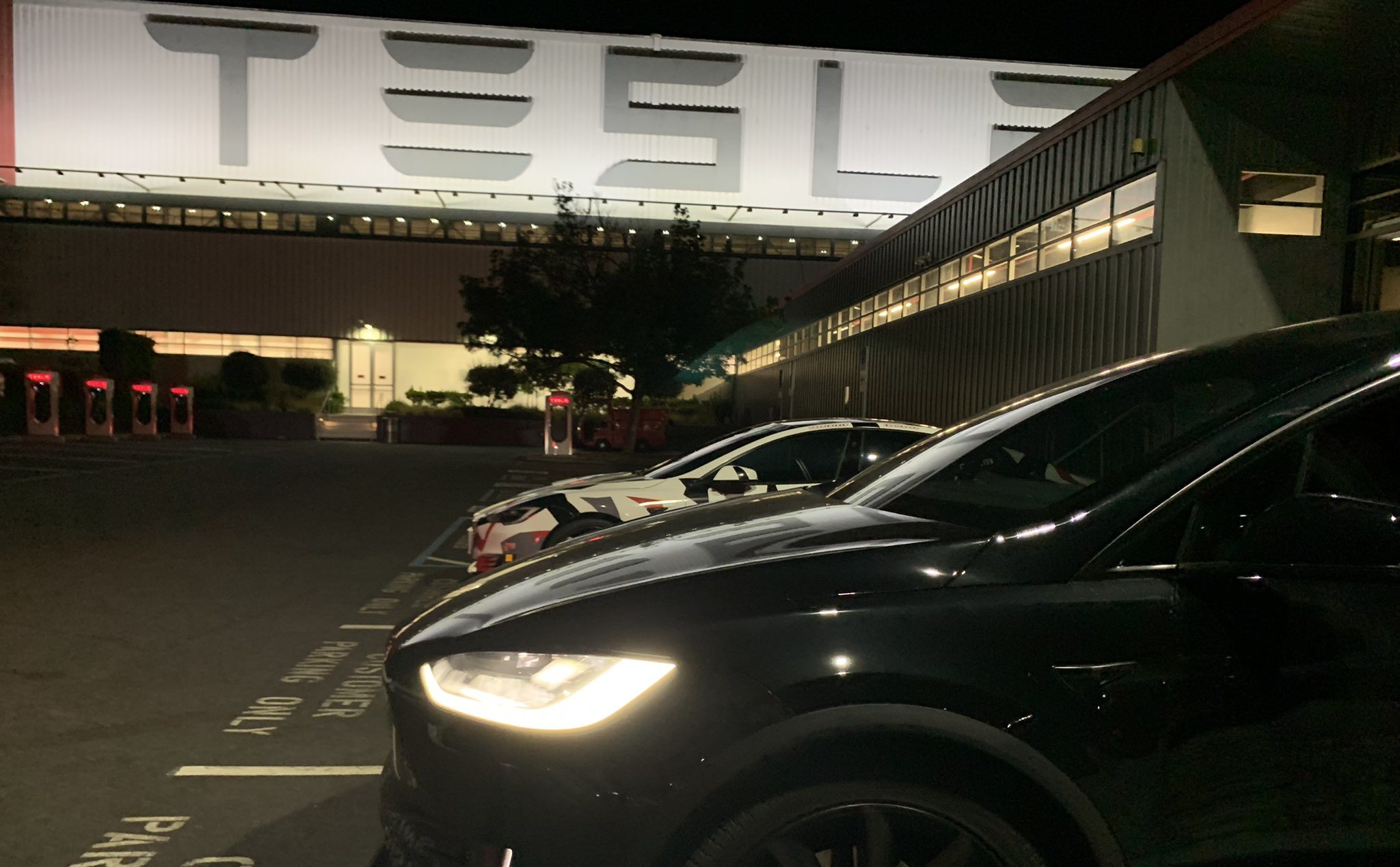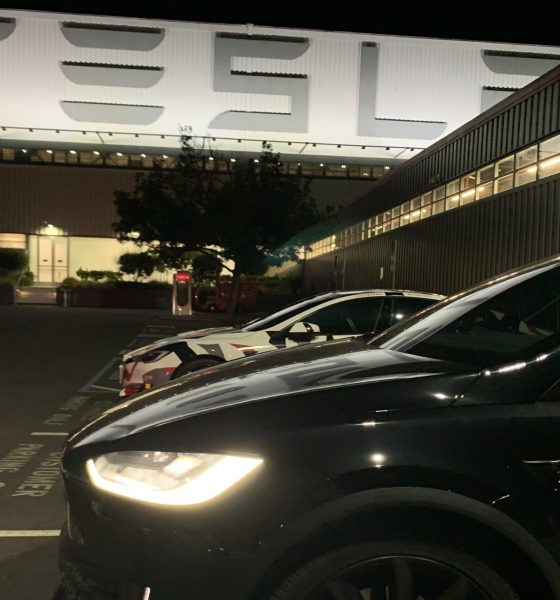

News
Tesla gets pressure from NY Retirement Fund over DFEH’s systemic racism allegations
The New York State Common Retirement Fund is currently urging Texas-based electric vehicle maker Tesla to disclose how much the company spends on settling complaints related to sexual harassment and racial discrimination. The Fund’s requests were filed in a shareholder proposal last week after the California Department of Fair Employment and Housing (DFEH) filed its high-profile racism case against Tesla.
As per the resolution outlined in the Fund’s shareholder proposal, it would be best for Tesla to publish an annual report indicating how much it paid in settlements related to harassment and discrimination complaints. The Fund also urged Tesla to provide specifics on the progress it has made in decreasing the time it takes to settle grievances. The EV maker was urged to disclose the number of pending cases it is looking to rectify internally and through litigation as well.
The NY Pension Fund described its proposal in the following section:
“Shareholders request the Board of Directors of Tesla, Inc. to oversee the preparation of an annual public report describing and quantifying the effectiveness and outcomes of Company efforts to prevent harassment and discrimination against protected classes of employees, including, but not limited to, sexual harassment and racial discrimination.
“The report should disclose the Company’s progress on relevant metrics and targets, such as: (a) the total number and aggregate dollar amount of disputes settled by the company related to abuse, harassment or discrimination based on race, religion, sex, national origin, age, disability, genetic information, service member status, gender identity, or sexual orientation; (b) the company’s progress toward reducing the average length of time it takes to resolve sexual harassment or discrimination complaints, either through internal processes or through litigation; and (c) the total number of pending harassment or discrimination complaints the company is seeking to resolve through internal processes or through litigation.
“This report should not include the names of accusers or details of their settlements without their consent and should be prepared at a reasonable cost and omit any information that is proprietary, privileged, or violative of contractual obligations.”
These pieces of information, according to the Fund, are material to shareholders. This is especially true since civil rights violations could easily result in notable costs for the EV maker. A good example of this was a $137 million jury verdict against Tesla, which was announced following a lawsuit by a former employee who accused the company of racial discrimination. Tesla is currently challenging the $137 jury verdict, which U.S. District Judge William Orrick has described as “extremely high.”
The NY Pension Fund explained this in the following section:
“Information concerning complaints, legal disputes, and settlements (individually and in the aggregate) are of great interest, and often material to investors. The SEC has shown increased attention to human capital management issues, as demonstrated by its 2020 rulemaking, and Chairman Gensler’s public comments about upcoming additional disclosure proposals and characterization of workforce as a ‘key asset.’ There have been several high-profile derivative suits settled recently, including at Twentieth Century Fox, Wynn Resorts, and Alphabet, alleging boards breached their duties for failing to protect employees from discrimination and harassment, injuring the companies and their shareholders.”
“A report such as the one requested would assist shareholders in assessing whether the Company is improving its workforce management. Civil rights violations within the workplace can result in substantial costs to companies, including fines and penalties, legal costs, costs related to absenteeism, and reduced productivity. A company’s failure to properly manage its workforce can damage corporate goodwill, making it more difficult to retain and recruit employees, and jeopardize relationships with customers and partners.”
The New York State Common Retirement Fund is among the company’s shareholders that have decided to put some pressure on Tesla following the California DFEH’s lawsuit. Other notable shareholders in the EV maker, such as Baron Capital, Vanguard Group Inc., BlackRock Inc., Capital group, the California Public Employees’ Retirement System, and Fidelity Investments, have so far been silent about the issue. Tesla has not issued a response to the NY Pension Fund’s proposal either, though the company has outlined its stance against the DFEH’s racism case in a blog post published on its website.
In its blog post, Tesla noted that the DFEH has so far declined to provide the company with specific allegations or factual basis for its lawsuit. The EV maker also noted that over the past five years, the DFEH had been asked on almost 50 occasions to investigate the company, but each one of these was closed with the agency finding no fault in Tesla.
“Over the past five years, the DFEH has been asked on almost 50 occasions by individuals who believe they were discriminated against or harassed to investigate Tesla. On every single occasion, when the DFEH closed an investigation, it did not find misconduct against Tesla. It therefore strains credibility for the agency to now allege, after a three-year investigation, that systematic racial discrimination and harassment somehow existed at Tesla. A narrative spun by the DFEH and a handful of plaintiff firms to generate publicity is not factual proof,” Tesla noted.
Don’t hesitate to contact us with news tips. Just send a message to simon@teslarati.com to give us a heads up.

News
Tesla FSD fleet is nearing 7 billion total miles, including 2.5 billion city miles
As can be seen on Tesla’s official FSD webpage, vehicles equipped with the system have now navigated over 6.99 billion miles.

Tesla’s Full Self-Driving (Supervised) fleet is closing in on almost 7 billion total miles driven, as per data posted by the company on its official FSD webpage.
These figures hint at the massive scale of data fueling Tesla’s rapid FSD improvements, which have been quite notable as of late.
FSD mileage milestones
As can be seen on Tesla’s official FSD webpage, vehicles equipped with the system have now navigated over 6.99 billion miles. Tesla owner and avid FSD tester Whole Mars Catalog also shared a screenshot indicating that from the nearly 7 billion miles traveled by the FSD fleet, more than 2.5 billion miles were driven inside cities.
City miles are particularly valuable for complex urban scenarios like unprotected turns, pedestrian interactions, and traffic lights. This is also the difference-maker for FSD, as only complex solutions, such as Waymo’s self-driving taxis, operate similarly on inner-city streets. And even then, incidents such as the San Francisco blackouts have proven challenging for sensor-rich vehicles like Waymos.
Tesla’s data edge
Tesla has a number of advantages in the autonomous vehicle sector, one of which is the size of its fleet and the number of vehicles training FSD on real-world roads. Tesla’s nearly 7 billion FSD miles then allow the company to roll out updates that make its vehicles behave like they are being driven by experienced drivers, even if they are operating on their own.
So notable are Tesla’s improvements to FSD that NVIDIA Director of Robotics Jim Fan, after experiencing FSD v14, noted that the system is the first AI that passes what he described as a “Physical Turing Test.”
“Despite knowing exactly how robot learning works, I still find it magical watching the steering wheel turn by itself. First it feels surreal, next it becomes routine. Then, like the smartphone, taking it away actively hurts. This is how humanity gets rewired and glued to god-like technologies,” Fan wrote in a post on X.
News
Tesla starts showing how FSD will change lives in Europe
Local officials tested the system on narrow country roads and were impressed by FSD’s smooth, human-like driving, with some calling the service a game-changer for everyday life in areas that are far from urban centers.

Tesla has launched Europe’s first public shuttle service using Full Self-Driving (Supervised) in the rural Eifelkreis Bitburg-Prüm region of Germany, demonstrating how the technology can restore independence and mobility for people who struggle with limited transport options.
Local officials tested the system on narrow country roads and were impressed by FSD’s smooth, human-like driving, with some calling the service a game-changer for everyday life in areas that are far from urban centers.
Officials see real impact on rural residents
Arzfeld Mayor Johannes Kuhl and District Administrator Andreas Kruppert personally tested the Tesla shuttle service. This allowed them to see just how well FSD navigated winding lanes and rural roads confidently. Kruppert said, “Autonomous driving sounds like science fiction to many, but we simply see here that it works totally well in rural regions too.” Kuhl, for his part, also noted that FSD “feels like a very experienced driver.”
The pilot complements the area’s “Citizen Bus” program, which provides on-demand rides for elderly residents who can no longer drive themselves. Tesla Europe shared a video of a demonstration of the service, highlighting how FSD gives people their freedom back, even in places where public transport is not as prevalent.
What the Ministry for Economic Affairs and Transport says
Rhineland-Palatinate’s Minister Daniela Schmitt supported the project, praising the collaboration that made this “first of its kind in Europe” possible. As per the ministry, the rural rollout for the service shows FSD’s potential beyond major cities, and it delivers tangible benefits like grocery runs, doctor visits, and social connections for isolated residents.
“Reliable and flexible mobility is especially vital in rural areas. With the launch of a shuttle service using self-driving vehicles (FSD supervised) by Tesla in the Eifelkreis Bitburg-Prüm, an innovative pilot project is now getting underway that complements local community bus services. It is the first project of its kind in Europe.
“The result is a real gain for rural mobility: greater accessibility, more flexibility and tangible benefits for everyday life. A strong signal for innovation, cooperation and future-oriented mobility beyond urban centers,” the ministry wrote in a LinkedIn post.
News
Tesla China quietly posts Robotaxi-related job listing
Tesla China is currently seeking a Low Voltage Electrical Engineer to work on circuit board design for the company’s autonomous vehicles.

Tesla has posted a new job listing in Shanghai explicitly tied to its Robotaxi program, fueling speculation that the company is preparing to launch its dedicated autonomous ride-hailing service in China.
As noted in the listing, Tesla China is currently seeking a Low Voltage Electrical Engineer to work on circuit board design for the company’s autonomous vehicles.
Robotaxi-specific role
The listing, which was shared on social media platform X by industry watcher @tslaming, suggested that Tesla China is looking to fill the role urgently. The job listing itself specifically mentions that the person hired for the role will be working on the Low Voltage Hardware team, which would design the circuit boards that would serve as the nervous system of the Robotaxi.
Key tasks for the role, as indicated in the job listing, include collaboration with PCB layout, firmware, mechanical, program management, and validation teams, among other responsibilities. The role is based in Shanghai.
China Robotaxi launch
China represents a massive potential market for robotaxis, with its dense urban centers and supportive policies in select cities. Tesla has limited permission to roll out FSD in the country, though despite this, its vehicles have been hailed as among the best in the market when it comes to autonomous features. So far, at least, it appears that China supports Tesla’s FSD and Robotaxi rollout.
This was hinted at in November, when Tesla brought the Cybercab to the 8th China International Import Expo (CIIE) in Shanghai, marking the first time that the autonomous two-seater was brought to the Asia-Pacific region. The vehicle, despite not having a release date in China, received a significant amount of interest among the event’s attendees.








